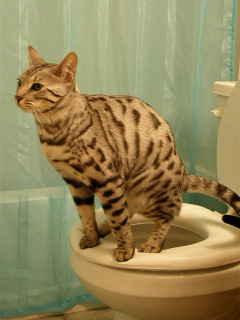Don't Flush Cat Poop Down Your Toilet - Preserve Your House's Plumbing Integrity
Don't Flush Cat Poop Down Your Toilet - Preserve Your House's Plumbing Integrity
Blog Article
Almost everyone is bound to have their own rationale in relation to Can You Flush Cat Poo or Litter Down the Toilet?.

Introduction
As cat proprietors, it's necessary to bear in mind how we deal with our feline good friends' waste. While it might appear hassle-free to flush cat poop down the toilet, this method can have destructive effects for both the setting and human wellness.
Alternatives to Flushing
The good news is, there are more secure and extra liable methods to get rid of cat poop. Consider the adhering to options:
1. Scoop and Dispose in Trash
The most typical method of dealing with cat poop is to scoop it into a biodegradable bag and toss it in the garbage. Be sure to utilize a dedicated litter inside story and get rid of the waste without delay.
2. Use Biodegradable Litter
Go with biodegradable cat trash made from materials such as corn or wheat. These trashes are environmentally friendly and can be safely dealt with in the garbage.
3. Bury in the Yard
If you have a lawn, take into consideration hiding feline waste in an assigned area away from veggie yards and water resources. Be sure to dig deep enough to avoid contamination of groundwater.
4. Mount a Pet Waste Disposal System
Invest in a family pet waste disposal system particularly developed for feline waste. These systems utilize enzymes to break down the waste, lowering odor and environmental effect.
Health and wellness Risks
In addition to environmental worries, purging feline waste can additionally pose health dangers to people. Pet cat feces might have Toxoplasma gondii, a bloodsucker that can create toxoplasmosis-- a potentially extreme illness, especially for expectant females and people with damaged immune systems.
Ecological Impact
Flushing pet cat poop introduces hazardous virus and bloodsuckers into the water system, positioning a significant threat to marine ecological communities. These impurities can negatively affect aquatic life and compromise water quality.
Conclusion
Responsible animal possession prolongs past offering food and shelter-- it also involves correct waste management. By refraining from flushing cat poop down the bathroom and opting for different disposal methods, we can decrease our environmental impact and protect human health and wellness.
Why Can’t I Flush Cat Poop?
It Spreads a Parasite
Cats are frequently infected with a parasite called toxoplasma gondii. The parasite causes an infection called toxoplasmosis. It is usually harmless to cats. The parasite only uses cat poop as a host for its eggs. Otherwise, the cat’s immune system usually keeps the infection at low enough levels to maintain its own health. But it does not stop the develop of eggs. These eggs are tiny and surprisingly tough. They may survive for a year before they begin to grow. But that’s the problem.
Our wastewater system is not designed to deal with toxoplasmosis eggs. Instead, most eggs will flush from your toilet into sewers and wastewater management plants. After the sewage is treated for many other harmful things in it, it is typically released into local rivers, lakes, or oceans. Here, the toxoplasmosis eggs can find new hosts, including starfish, crabs, otters, and many other wildlife. For many, this is a significant risk to their health. Toxoplasmosis can also end up infecting water sources that are important for agriculture, which means our deer, pigs, and sheep can get infected too.
Is There Risk to Humans?
There can be a risk to human life from flushing cat poop down the toilet. If you do so, the parasites from your cat’s poop can end up in shellfish, game animals, or livestock. If this meat is then served raw or undercooked, the people who eat it can get sick.
In fact, according to the CDC, 40 million people in the United States are infected with toxoplasma gondii. They get it from exposure to infected seafood, or from some kind of cat poop contamination, like drinking from a stream that is contaminated or touching anything that has come into contact with cat poop. That includes just cleaning a cat litter box.
Most people who get infected with these parasites will not develop any symptoms. However, for pregnant women or for those with compromised immune systems, the parasite can cause severe health problems.
How to Handle Cat Poop
The best way to handle cat poop is actually to clean the box more often. The eggs that the parasite sheds will not become active until one to five days after the cat poops. That means that if you clean daily, you’re much less likely to come into direct contact with infectious eggs.
That said, always dispose of cat poop in the garbage and not down the toilet. Wash your hands before and after you clean the litter box, and bring the bag of poop right outside to your garbage bins.
https://trenchlesssolutionsusa.com/why-cant-i-flush-cat-poop/

As an avid person who reads about How to Dispose of Cat Poop and Litter Without Plastic Bags, I assumed sharing that short article was beneficial. Appreciated our posting? Please share it. Help other people discover it. We value reading our article about How to Dispose of Cat Poop and Litter Without Plastic Bags.
Call Today Report this page